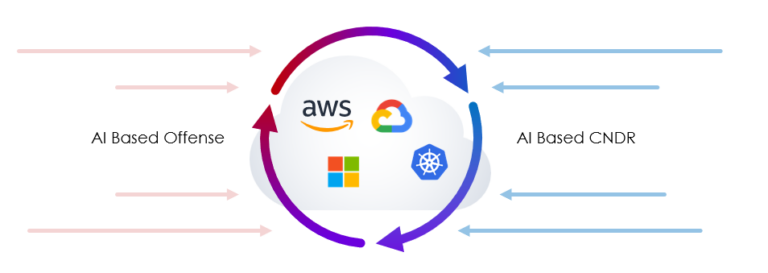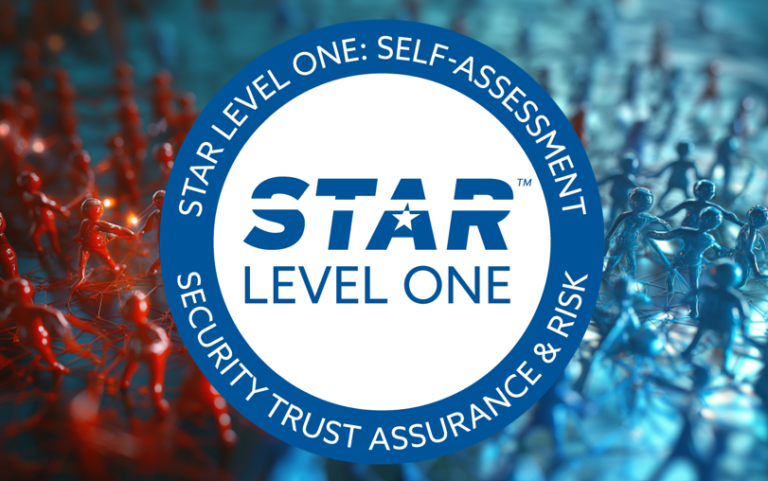By Asaf Shahar, VP, Product at Skyhawk Security
Securing cloud environments presents unique challenges due to their constantly evolving nature. CERT-IL’s alert on public cloud threats (ALERT-CERT-IL-W-1810) underscores common vulnerabilities—exposed credentials, service misconfigurations, and inadequate tenant isolation—frequently exploited by attackers. This blog delves into why continuous monitoring is essential for cloud security, with a particular emphasis on real-time incident detection and response to mitigate these risks effectively.
The Importance of Real-Time Incident Detection in Dynamic Cloud Environments
In cloud environments, resources are continuously spun up and down, integrations change, and access configurations are frequently updated. This fluid nature can create potential security blind spots if not properly managed. CERT-IL points to serious risks like dependency confusion attacks and weak infrastructure boundaries, which may allow attackers to access sensitive areas of the environment. Real-time monitoring offers the visibility needed to detect these risks as they arise, enabling security teams to respond swiftly and prevent incidents from escalating.
Key Benefits of Continuous Monitoring for Incident Detection and Response
1. Immediate Threat Detection
Cloud environments face complex threats, such as credential theft and unauthorized API calls, which can lead to data breaches. For instance, CERT-IL describes attacks where exposed secrets on platforms like GitHub allowed unauthorized access to cloud environments. Continuous monitoring detects such unusual access patterns in real time, sending alerts that enable rapid responses to prevent further escalation.
2. Early Detection of Misconfigurations
Misconfigurations remain a leading cause of cloud breaches. Common issues include publicly accessible storage buckets and overly permissive IAM roles. Additionally, CERT-IL highlights a critical misconfiguration with SAML token handling, where an improper implementation allowed attackers to alter token content. This enabled unauthorized users to impersonate others, gaining inappropriate access to cloud resources. Continuous monitoring can flag these types of misconfigurations, allowing security teams to secure cloud assets before attackers can exploit them.
3. Enhanced Detection of Credential Theft with UEBA and Anomaly Detection
Credential theft is a persistent threat in cloud environments, where attackers can use stolen credentials to access sensitive resources. CERT-IL notes the effectiveness of User and Entity Behavior Analytics (UEBA) and anomaly detection in identifying credential misuse. These tools help monitor typical user patterns, flagging unusual behaviors like access from unfamiliar locations or excessive data downloads. For example, continuous monitoring can detect a scenario where a normally low-privileged user suddenly attempts to access high-sensitivity resources or initiate bulk data transfers, which could indicate account compromise. By detecting such anomalies, UEBA adds a critical layer of defense against credential-based attacks.
4. Monitoring for Malicious Packages in Dependencies
In modern cloud applications, third-party dependencies are essential, but they also introduce risks. CERT-IL points out the increasing use of malicious packages in public repositories like NPM and PyPI. Attackers publish these compromised packages, which are then unknowingly downloaded and integrated into applications, allowing unauthorized code execution or data exfiltration. Continuous monitoring can help by verifying the integrity of dependencies and alerting teams if any malicious code is detected, reducing the risk of such supply chain attacks.
5. Accelerated Incident Response in Multi-Tenant Environments
Cloud environments are especially vulnerable to attacks that exploit shared infrastructure. CERT-IL documents incidents where adversaries took advantage of weak tenant isolation, allowing them to move laterally across tenant environments to access sensitive data. Real-time monitoring enables rapid incident response by detecting unusual cross-tenant interactions and isolating compromised areas quickly to contain the threat.
6. Visibility into Shadow IT for Proactive Defense
Shadow IT—unauthorized cloud services operating outside of formal security policies—creates additional risks. For example, cloud storage buckets deployed independently by business units may lack security controls, inadvertently exposing sensitive data. CERT-IL advises maintaining strict oversight of all cloud assets, as these unauthorized services increase the cloud’s attack surface. Continuous monitoring helps organizations discover and manage shadow IT to secure cloud environments comprehensively.
Best Practices for Effective Incident Detection and Response in Continuous Monitoring
- Automate and Centralize Monitoring for Scalability and Rapid Response
- With the complexity of cloud environments, manual monitoring is impractical. CERT-IL emphasizes the importance of automation to handle large data volumes and reduce response times. Incident detection systems and CSPM platforms can automate the detection of risks, delivering real-time alerts and supporting faster responses. Additionally, transmitting telemetry to a centralized incident detection system enhances the speed and depth of response, allowing for rapid analysis and timeline reconstruction during events. Centralizing this data also prevents attackers from tampering with logs, preserving valuable evidence for incident investigations.
- Prioritize IAM and Least-Privilege Access
- IAM misconfigurations, like over-privileged roles, remain a top risk in cloud environments. CERT-IL notes that improperly configured IAM roles have allowed attackers to escalate privileges. Continuous monitoring of IAM configurations ensures that access adheres to the least-privilege principle, limiting unauthorized actions.
- Use of AI in Anomaly Detection
- The document underscores the necessity of AI in anomaly detection, providing nuanced insights into credential usage, unexpected data transfers, and access attempts from atypical locations. By correlating these behaviors with known attack patterns, organizations can detect threats early. Integrating AI with SOAR (Security Orchestration, Automation, and Response) can also streamline responses to incidents.
- Tune Alerts to Reduce Fatigue
- A common challenge in continuous monitoring is alert fatigue. CERT-IL highlights the importance of tuning alerts to prioritize significant events and reduce noise. Regularly adjusting alert thresholds can help security teams focus on genuine threats and respond efficiently.
- Detection-as-Code
- CERT-IL highlights the value of Detection-as-Code within DevSecOps, embedding security checks as an integral part of the software development lifecycle. By codifying detection mechanisms, organizations can automate security configurations and anomaly detection, reducing manual processes and expediting response times.
Embrace CTEM with Skyhawk Security
In an era where cloud environments are increasingly complex and dynamic, organizations need more than just traditional vulnerability management. Skyhawk Security’s platform, powered by the Autonomous Purple Team, offers a proactive, continuous, and automated approach to threat management and incident detection that is essential for safeguarding your most valuable cloud assets. By integrating real-time attack simulations, verified alerts, and automated responses, Skyhawk Security provides a robust solution that keeps your organization ahead of the curve, ensuring comprehensive protection against evolving cyber threats to stop cloud breaches.
Subscribe to Skyhawk platform for free today and try it out!






